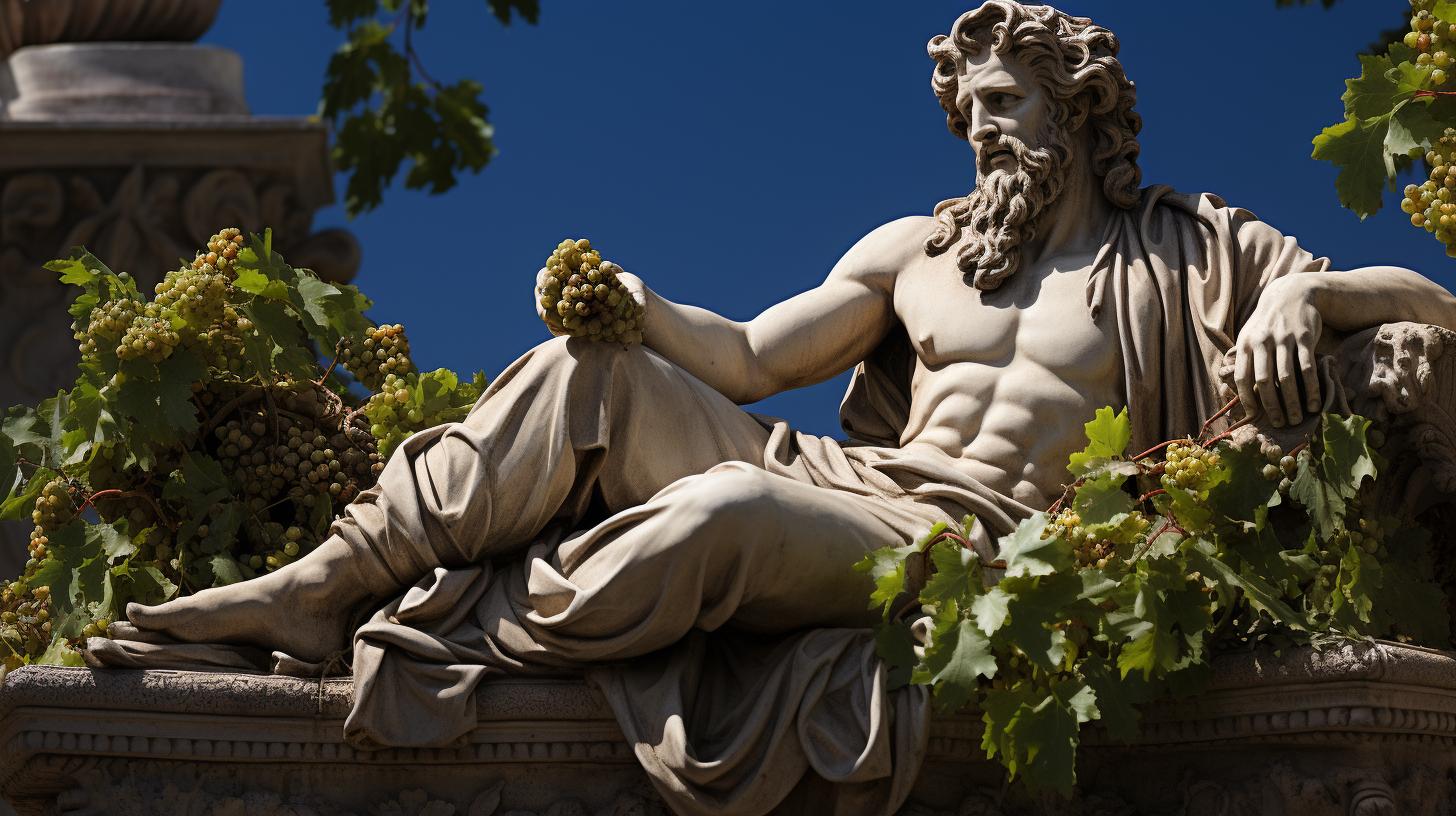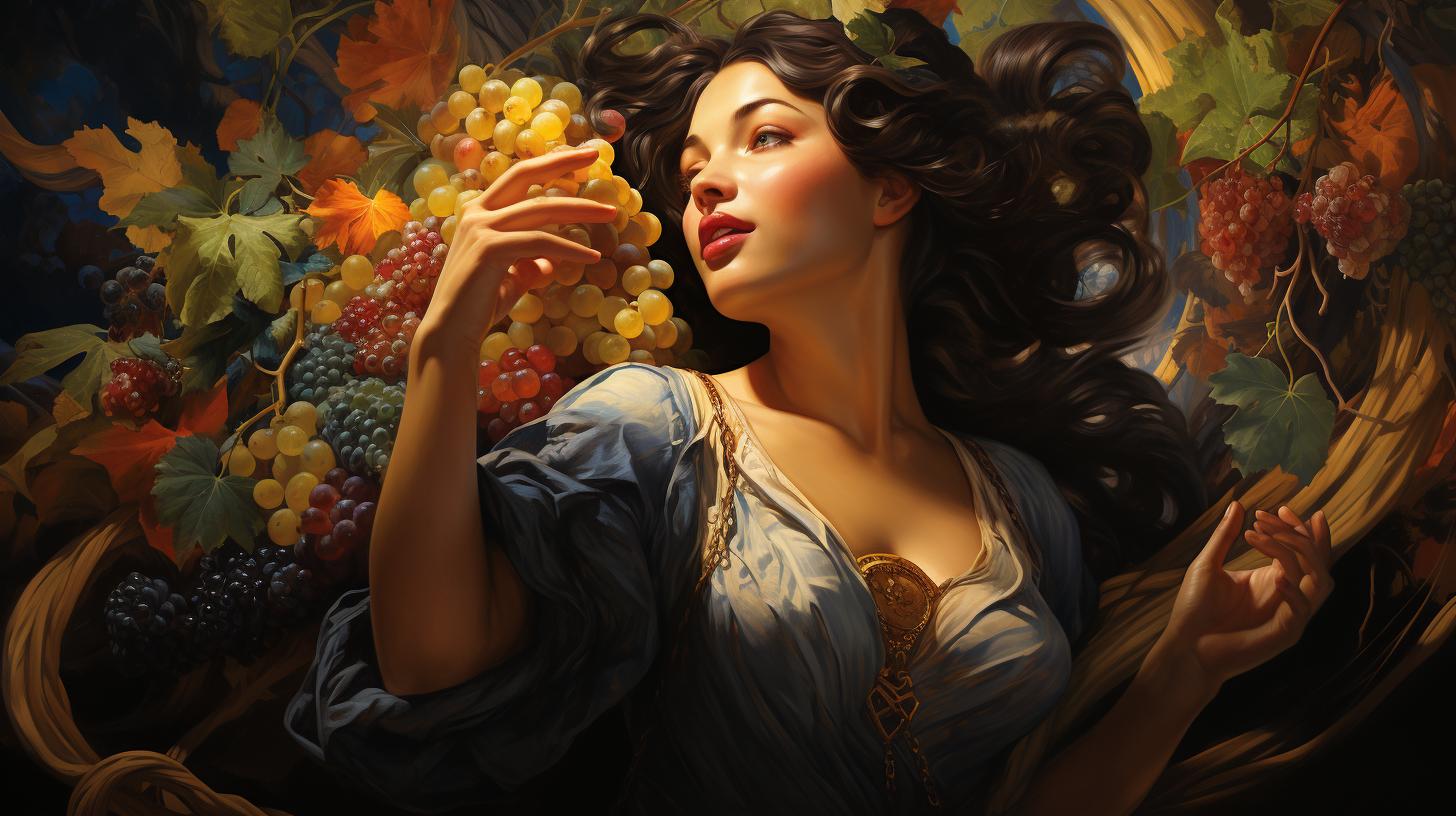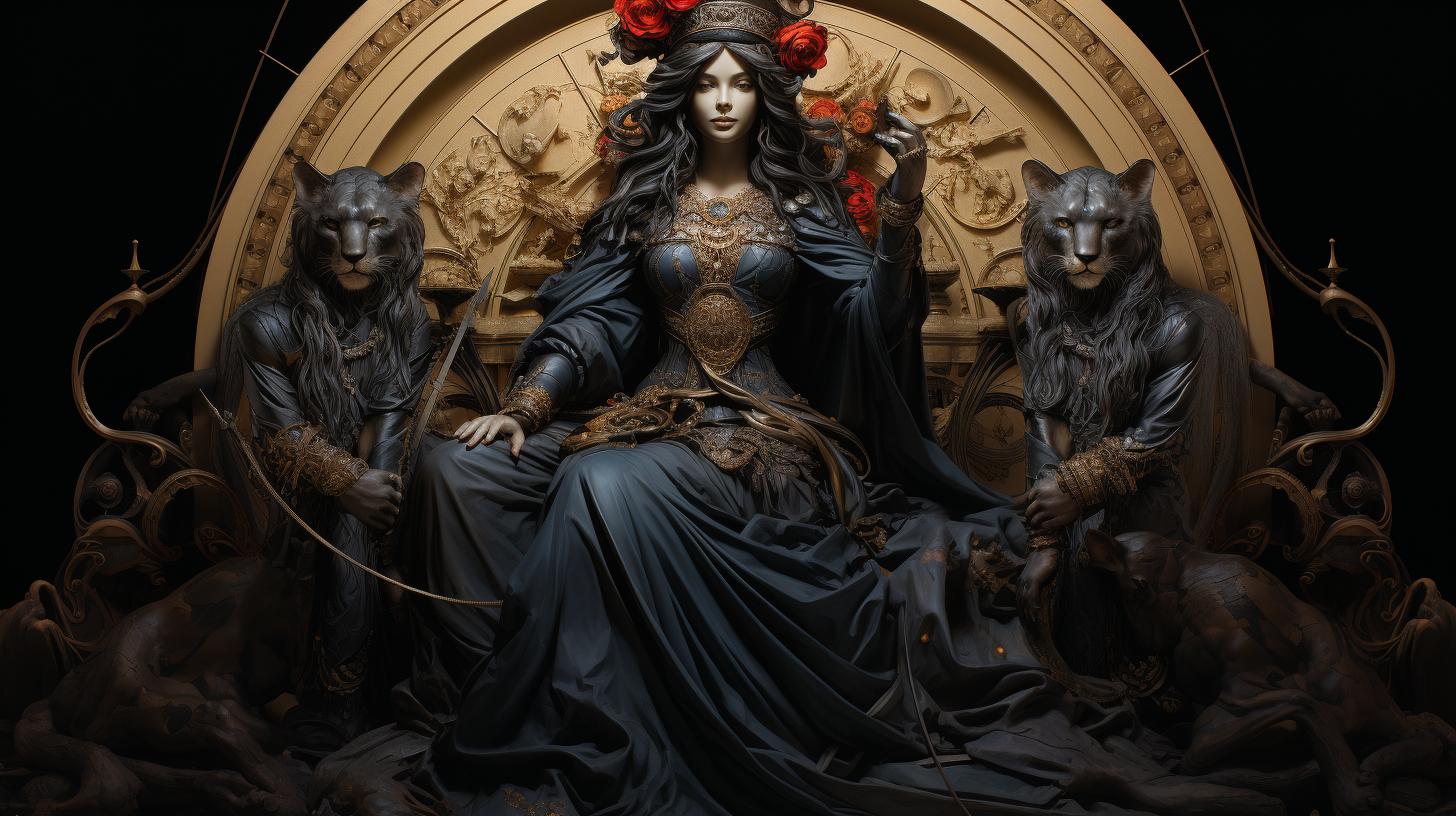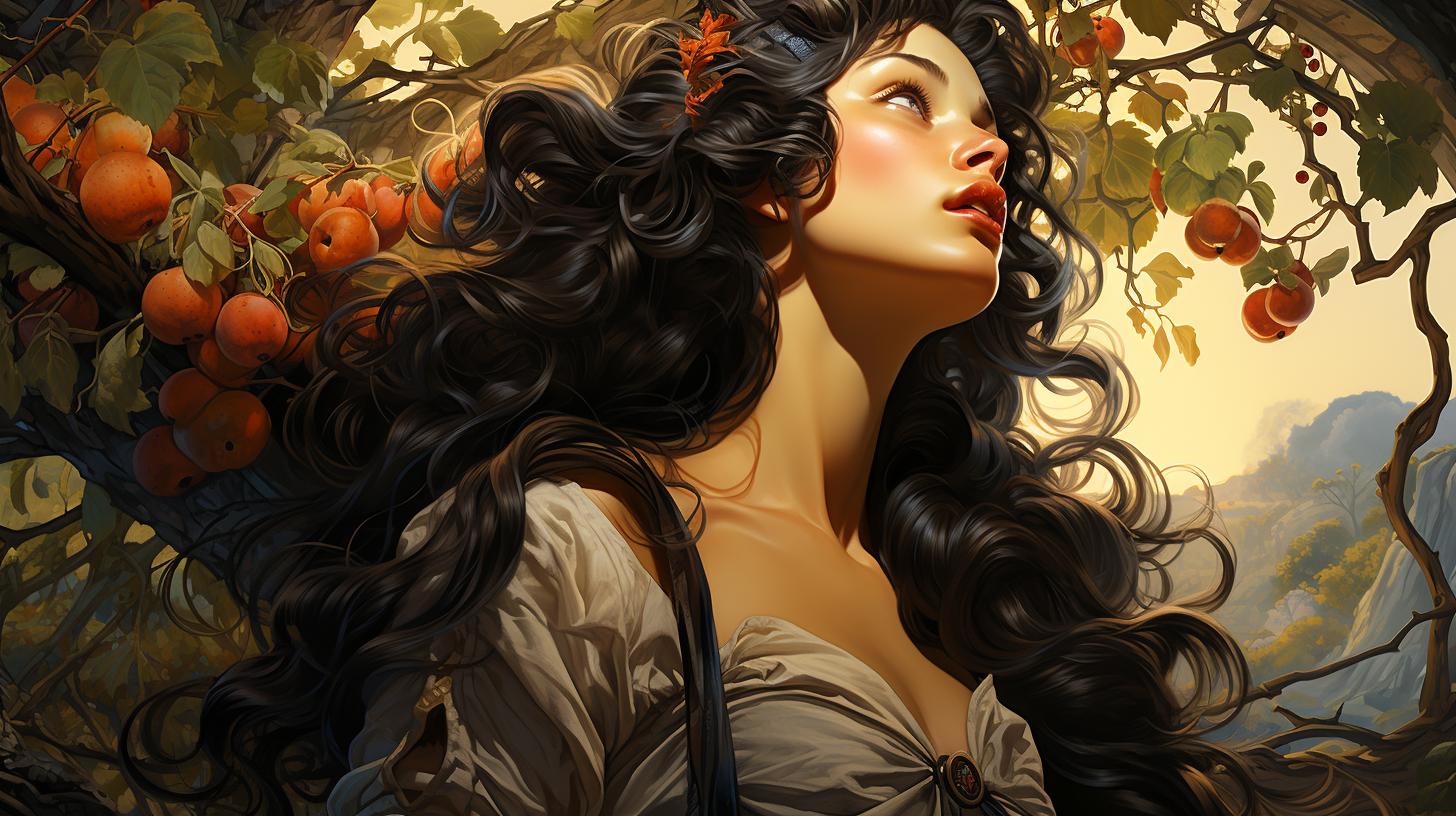Roman Goddess Proserpina: Mythology, Cult, and Representation Explained

Proserpina, the Roman goddess equivalent to Greek’s Persephone, has a captivating mythology rooted in her abduction by Pluto, the lord of the Underworld. As the daughter of Ceres, the goddess of agriculture, Proserpina’s disappearance caused havoc in crops until Jupiter revealed her true identity.
Serving as the queen of the Underworld, Proserpina’s association with other deities and her temporal connection to seasons have left a lasting impact on classical literature, cults, and artistic representations. This article explores the diverse aspects and significance of Proserpina in Roman mythology and beyond.
The Mythological Origins of Proserpina
Proserpina, the enigmatic Roman goddess, has a rich mythological background that dates back to ancient times. According to the legends, she is the daughter of Ceres, the goddess of agriculture, and Jupiter, the king of the gods.
Proserpina’s story begins with her idyllic life in the mortal realm, where she roamed fields of flowers and enjoyed the bounties of nature.
However, her peaceful existence was disrupted when Pluto, the powerful god of the Underworld, became captivated by her beauty.
Seizing an opportunity, Pluto kidnapped Proserpina and whisked her away to his dark realm beneath the earth’s surface. This act triggered a series of events that would forever shape Proserpina’s role in mythology.
Proserpina’s abduction by Pluto led to immense grief and sorrow for her mother, Ceres. Desperate to find her daughter, Ceres wandered the earth, neglecting her duties as the goddess of agriculture.
The land suffered as crops withered and famine loomed over the mortal world.
Eventually, Jupiter intervened and revealed that Proserpina had become the queen of the Underworld. While he granted Ceres the opportunity to be reunited with her daughter for a portion of the year, Proserpina was bound to spend the other part in the realm of Pluto. This division symbolizes the cyclical nature of the seasons, as Proserpina’s time in the Underworld corresponds to the onset of winter and her return to Ceres signifies the arrival of spring.
Proserpina’s mythological origins provide insight into the complex dynamics between the mortal realm and the Underworld in ancient Roman culture. Her story is a reflection of the interconnectedness of life, death, and the perpetual cycle of nature.
Proserpina’s Abduction and Role in the Underworld
Proserpina, the Roman goddess of the Underworld, had a tumultuous journey that started with her abduction by Pluto, the ruler of the Underworld. According to mythology, Proserpina was innocently gathering flowers when Pluto emerged from the depths and seized her, taking her against her will to his dark realm.
Her abduction was a pivotal event, causing great distress to her mother Ceres, the goddess of agriculture. In her grief, Ceres created chaos in the mortal realm, causing crops to wither and famine to spread.
Blinded by sorrow, she searched frantically for her beloved daughter, unaware of her whereabouts.
Meanwhile, Proserpina found herself thrust into a new role as the queen of the Underworld. In this realm of shadows and gloom, she ruled alongside Pluto, presiding over the souls of the departed.
Proserpina’s time in the Underworld was marked by melancholy, as she longed for her mother and the life she had known in the world above.
It was not until Jupiter, the king of the gods, intervened that Proserpina’s fate took a hopeful turn.
Jupiter revealed to Ceres that her daughter was alive and well, albeit in the Underworld. Moved by the mother’s anguish, Jupiter arranged a compromise: Proserpina would be allowed to spend part of the year with her mother on the Earth’s surface, bringing prosperity and fertility to the land, while the remaining months would be spent fulfilling her duties in the Underworld.
This tale of Proserpina’s abduction and subsequent role in the Underworld serves as a metaphor for the changing seasons. Her time spent with Ceres symbolizes the arrival of spring and summer, when the Earth flourishes under the goddess of agriculture’s influence.
Conversely, her return to the Underworld represents the onset of autumn and winter, when the land lies dormant and life retreats.
Throughout history, Proserpina’s story has been depicted in art, literature, and theater, capturing the imagination of countless individuals.
Her abduction and role in the Underworld continue to fascinate and inspire, serving as a reminder of the complex interplay between life and death, light and darkness.
The Relationship between Proserpina and Ceres
Proserpina, the Roman goddess, shares a deep and intricate relationship with her mother, Ceres. Ceres, known as the goddess of agriculture, fertility, and motherly love, plays a significant role in Proserpina’s story.
In Roman mythology, Ceres is described as the loving and devoted mother of Proserpina. When Proserpina was abducted by Pluto, Ceres was inconsolable and went on a frantic search for her beloved daughter.
During this time, Ceres unleashed her fury on the world, causing widespread destruction and a devastating impact on the crops.
The bond between Ceres and Proserpina is not only that of a mother and daughter, but also represents the cycle of life and death.
The seasonal changes, mirroring the cycles of agriculture, are believed to be a reflection of Ceres’ grief for her lost daughter. When Proserpina resides in the Underworld during the winter months, Ceres mourns her absence, causing the earth to become barren.
As Proserpina returns to the surface in the spring, Ceres rejoices, bringing forth the renewal of life and abundant growth.
The relationship between Ceres and Proserpina showcases the eternal love of a mother for her child, as well as the profound impact it has on the natural world.
It highlights the interconnectedness of familial bonds and the symbiotic relationship between humans and nature, showing the depth of their influence on one another.
Proserpina as Queen of the Underworld
After being abducted by Pluto, Proserpina was bestowed the title of the queen of the Underworld, ruling alongside her captor. This significant role elevated her status and solidified her position as a prominent figure in Roman mythology.
As the queen, Proserpina held sway over the spirits of the dead and played a vital role in the cycle of life and death.
Proserpina’s position as the queen of the Underworld underscored her power and influence in both the mortal and divine realms.
She became a figure of reverence and fear, overseeing the souls of the deceased and ensuring the balance of the underworld. Her association with the realm of the dead added a layer of mystique and complexity to her character.
As the queen of the Underworld, Proserpina embodies both darkness and rebirth. Her dual nature as the daughter of agriculture, and the ruler of the realm of the dead, represents the eternal cycle of life and death.
Through her reign, she symbolizes the transformative power of nature and the inevitability of change.
The portrayal of Proserpina as the queen of the Underworld in various artworks and writings reflects her significance in Roman mythology.
Artists often depicted her with a regal countenance, adorned with symbols of her authority, such as a scepter and a crown. Writers, too, explored her role as the queen, delving into her relationships with other deities and her impact on the mortal world.
Symbolism and Representations of Proserpina in Classical Literature
Proserpina’s story has inspired numerous works in classical literature, where she is often depicted as a symbol of transformation, growth, and the cyclical nature of life. Through her abduction and subsequent role as the queen of the Underworld, Proserpina embodies the themes of loss, rebirth, and the passage between different realms.
Classical Literature Quotes featuring Proserpina
- “Thus I pacified Psyche and kissed her, / And tempted her out of her gloom, / And conquered her scruples and gloom; / And we passed to the end of the vista, / But were stopped by the door of a tomb.
/ And I said — ‘What is written, sweet sister, / On the door of this legended tomb?’ / She replied — ‘Ulalume — Ulalume / ‘Tis the vault of thy lost Ulalume!’” –
Edgar Allan Poe, “Ulalume” - “When lo, as they reached the mountain-side, / A wondrous portal opened wide, / As if a cavern was suddenly hollowed; / And the Piper advanced and the children followed, / And when all were in to the very last, / The door in the mountain-side shut fast.”
– Robert Browning, “The Pied Piper of Hamelin”
- “And a river flows with a gentle sound, / Like the bridal music that follows / The feet of the bride and bridegroom down / From the village unto the town.”– Henry Wadsworth Longfellow, “The Golden Legend”
These quotes from renowned poets and writers showcase the varied representations of Proserpina in classical literature. From Edgar Allan Poe’s dark and mysterious depiction to Robert Browning and Henry Wadsworth Longfellow’s use of Proserpina as a symbol of transition and transformation, these works reveal the enduring appeal and significance of the Roman goddess in literary imagination.
Proserpina’s Association with Other Deities and Mythological Figures
Proserpina, as a prominent figure in Roman mythology, is closely associated with various deities and mythological figures. Her captivating story intertwines with other divine beings, enriching the tapestry of Roman folklore and culture.
The Mother-Daughter Bond: Ceres and Proserpina
A crucial connection in Proserpina’s mythology lies in her relationship with her mother, Ceres, the goddess of agriculture. The abduction of Proserpina by Pluto, the ruler of the Underworld, deepens the bond between mother and daughter.
Ceres’ relentless search for Proserpina directly affects the agricultural cycle, representing the intertwining of the natural world with divine forces.
Triple Goddess: Proserpina as Trivia
Proserpina’s significance goes beyond her role as a goddess of the Underworld. She also represents one of the aspects of the triple goddess Trivia, along with Luna and Hecate.
This trinity symbolizes the phases of the moon, further accentuating Proserpina’s connection to cycles and seasons.
Powerful Companions: Proserpina and the Erinias
Another notable association linked to Proserpina is her role as the queen of the Erinias, also known as the Tres Furiae or Furies. These vengeful spirits personify divine retribution and punishment.
Proserpina’s affiliation with the Erinias highlights her authority and involvement in the realm of justice and punishment.
Libera: Proserpina’s Roman Equivalent
In Roman mythology, Proserpina is often identified with Libera, a goddess associated with fertility and liberation. While they share similar attributes and roles, Proserpina’s association with the Underworld distinguishes her from the primarily earthly realm of Libera.
Diverse Representations in Art and Literature
The allure of Proserpina’s captivating story has inspired countless artistic and literary works throughout history.
From ancient statues and reliefs to Renaissance paintings and modern adaptations, Proserpina’s depiction varies, reflecting the artistic interpretations of different eras and artists.
Overall, Proserpina’s association with other deities and mythological figures enhances her multifaceted nature.
Whether as a daughter of Ceres, a member of the triple goddess Trivia, a queen of the Erinias, or in her connection to Libera, Proserpina’s presence in Roman mythology intertwines with various divine entities, enriching the intricate tapestry of Roman religious beliefs and cultural traditions.
Temporal Aspect: Proserpina’s Seasons in the Underworld
One of the most intriguing aspects of Proserpina’s story is her connection to the changing seasons. According to mythology, Proserpina must spend a portion of the year in the Underworld because she consumed a pomegranate seed while there.
This consumption ties her to her husband Pluto and the realm of the dead.
The time that Proserpina spends in the Underworld corresponds to the winter season. As she descends, her mother Ceres mourns, causing the barrenness of the Earth and the absence of crops.
This period symbolizes the gloom and dormancy of winter.
On the other hand, when Proserpina returns to the surface, she reunites with her mother and brings the rebirth of nature. This marks the arrival of spring, as Ceres rejoices and blesses the land with fertility, resulting in the flourishing of crops.
The cycle continues each year, with Proserpina moving between the realms, bringing forth the changing seasons.
The seasonal aspect of Proserpina’s story has been an important theme in classical literature and art.
Many poets and writers have used her tale as a metaphor for the cyclical nature of life, death, and rebirth. It serves as a reminder of the constant flux of the natural world, reflecting the eternal rhythm of the changing seasons.
The symbolism of Proserpina’s seasons goes beyond mere weather patterns. It speaks to the universal concept of cycles and transformations, highlighting the interconnectedness of life and death, growth and decay. As the queen of the Underworld, Proserpina embodies the delicate balance between darkness and light, sorrow and joy.
In art, Proserpina is often depicted in floral landscapes or surrounded by elements representing the different seasons. These visual representations capture the essence of her dual role as both queen of the Underworld and the goddess of spring.
The story of Proserpina’s seasons continues to inspire artists, writers, and thinkers even in the modern era. Its timeless message serves as a reminder of the cyclical nature of existence and the inevitable passage of time.
Cult and Worship of Proserpina in Ancient Rome
In ancient Rome, the cult of Proserpina was deeply intertwined with the agricultural practices and the cycle of seasons. As the daughter of Ceres, the goddess of agriculture, Proserpina held a significant role in the spiritual lives of the Romans, particularly those engaged in farming and cultivation.
The worship of Proserpina involved rituals, ceremonies, and festivals dedicated to honoring her as the fertility goddess. These rituals were conducted primarily by priests and priestesses known as the pontifices and Vestal Virgins, respectively.
They performed sacred rites, offerings, and sacrifices to ensure abundant harvests and favorable agricultural conditions.
- One of the most important festivals associated with Proserpina was the Cerealia, celebrated in April to honor Ceres and her daughter.
This festival included processions, feastings, and performances, with prayers offered for a bountiful harvest.
- Another notable event was the Ludi Florales, or the Floralia, held in late April to early May.
This festival emphasized the renewal of nature and featured various forms of entertainment, including theatrical performances, floral decorations, and dancing.
- Proserpina’s cult also involved the Eleusinian Mysteries, a series of secret rituals and initiations that focused on the cycle of life, death, and rebirth.
These mysteries symbolized the journey of Proserpina between the realms of the living and the dead.
The devotees of Proserpina sought her blessings not only for agricultural prosperity but also for personal well-being, particularly in matters related to fertility, marriage, and the afterlife.
Offerings such as fruits, flowers, and wine were made to her in temples and sanctuaries dedicated to her worship.
The influence of Proserpina extended beyond Rome, as her worship spread throughout the Roman Empire, reaching areas such as Gaul, Britain, and North Africa.
Alongside the cult of Ceres, she became an integral part of the Roman pantheon, provoking a sense of reverence and awe among the populace.
Influence of Proserpina in Renaissance and Modern Art
Proserpina’s captivating myth and powerful symbolism have had a significant impact on Renaissance and modern art.
Artists drew inspiration from her tale, incorporating her motifs into their works to convey profound themes and emotions.
During the Renaissance, Proserpina’s abduction and subsequent role as the queen of the Underworld became a popular subject for artists.
Her story often symbolized the struggle between life and death, as well as themes of transformation and rebirth. Paintings, sculptures, and frescoes depicted her in various stages of her journey, capturing the emotions of anguish, despair, and eventual redemption.
The Baroque era further emphasized Proserpina’s influence, as artists utilized her as a symbol of divine femininity and power. Her association with gods, goddesses, and mythical creatures allowed for rich allegorical interpretations in artwork.
Proserpina, with her dual nature as both a goddess of the Underworld and a goddess of fertility, represented the duality of existence and the constant cycle of life and death.
In modern art, Proserpina’s significance continued to evolve.
She became a muse for many artists exploring themes of femininity, identity, and the subconscious. Proserpina’s story delved into the depths of the human psyche, reflecting on themes of transformation, sacrifice, and the search for personal growth.
Artists conveyed these captivating narratives through various mediums, including painting, sculpture, photography, and performance art.
Proserpina’s influence extended beyond the visual arts. Her story served as inspiration for composers, playwrights, and poets.
Opera, in particular, embraced Proserpina’s myth, with numerous productions dedicated to her tale. The psychological depth and emotional resonance of her story lent themselves well to the operatic medium, allowing for powerful melodies and poignant solos that conveyed the range of human emotions.
In conclusion, Proserpina’s captivating myth and symbolism have left an indelible mark on Renaissance and modern art. Artists throughout the centuries have been inspired by her tale, exploring themes of transformation, life and death, femininity, and personal growth.
Proserpina continues to be a powerful figure in artistic expression, captivating audiences with her eternal story.
.




















